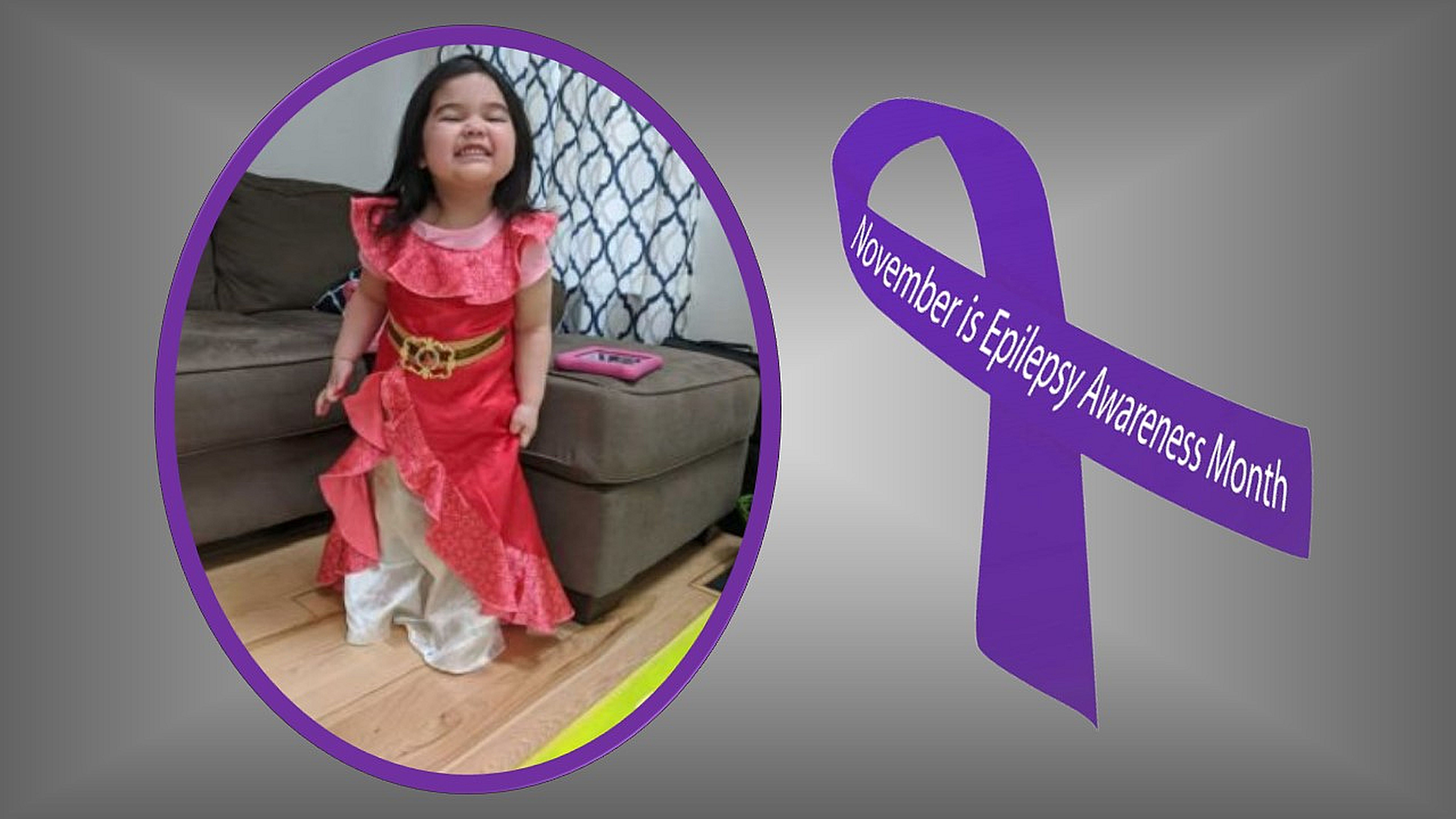Research Story Tip: Epilepsy Awareness Month Tale: Chloe Responds Well to Johns Hopkins Children’s Center Care
11/10/2020

At the age of 2, Chloe Dela Cruz, of Lake Ridge, Virginia, was a spunky and outgoing child without any health concerns. But that changed just a few months before her third birthday, recalls her mother Joanne Dela Cruz, when a horrifying experience happened after the family participated in a fun run event.
“Everything was going fine, and I turned around and I saw my daughter seizing in her car seat,” Joanne says. “We didn’t know what was going on.”
Chloe’s parents rushed her to a local hospital. At first, her medical team thought the seizure was a febrile seizure — a condition associated with a fever. But Chloe’s seizures increased in frequency — happening three or four times per day — and her parents were eventually told that she had epilepsy.
November is National Epilepsy Awareness Month. According to the Epilepsy Foundation, the disease is a disorder of the brain that causes seizures, affects one in 26 people and is more frequently seen in children than other age groups. It is one of the most common reasons that children are seen by a pediatric neurologist. Because seizures vary in their causes and characteristics, epilepsy affects people in many different ways.
In Chloe’s case, Joanne says her arms would stiffen and her eyes would widen. She would make mouth-clicking noises and was not able to hear anyone around her. After some time, Chloe’s seizures turned into “drop” seizures, and she was diagnosed with myoclonic astatic epilepsy, also known as Doose syndrome.
“She would violently drop and fly backward with force,” Joanne recalls. “She was hurting herself.”
Chloe was fitted for a helmet to protect her head in case of a seizure. During a three-month period, she was in and out of the hospital multiple times. Chloe also started having seizures at night, and Joanne, who calls herself a “scared, worry momma,” started sleeping in Chloe’s room.
Throughout those months, Chloe tried six anti-seizure medications in various combinations. Joanne says the medications affected Chloe’s function and caused her to gain weight. The girl’s local doctors recommended lowering carbohydrates, similar to a modified Atkins diet. That helped, but the seizures continued.
Eventually, after a recommendation from a friend, Joanne, Chloe and the family were referred to Eric Kossoff, M.D., professor of neurology and pediatrics at the Johns Hopkins University School of Medicine and medical director of the Pediatric Ketogenic Diet Center. Shortly after Kossoff began caring for Chloe, he prescribed one of the oldest treatments for epilepsy: the stricter, classic ketogenic diet, which calls for eating high-fat foods and few carbohydrates.
Chloe was admitted to Johns Hopkins Children’s Center in February of this year as standard protocol for pediatric patients at the start of a ketogenic diet. Within one month, her seizures stopped. The need for two of her three anti-seizure medications ended by the summer, and she is now nearly off the last one.
As Chloe approaches her fourth birthday this month, she has been seizure-free for more than 200 days. Her mother says Chloe is doing “fantastic.”
“She is such a trooper,” Joanne says. “She is super smart, super sassy, very kind and loving.”
“Chloe is one our favorite keto patients to see in clinic,” Kossoff adds. “She always sends us drawings, and her mother emails great photographs showing how well she is doing.”
